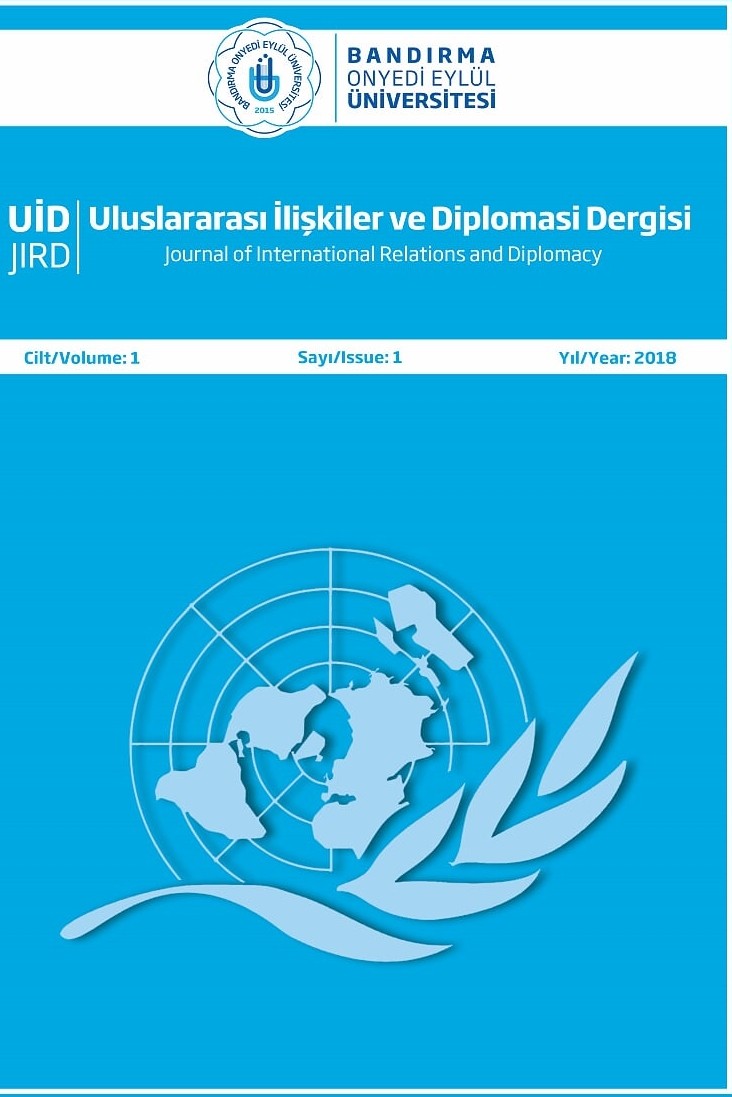INSTITUTIONAL REFORMS WITHIN THE FRAMEWORK OF CENTRAL ASIAN POLITICAL CONSOLIDATION
Soviet Union has been in a disintegration process since 1987, Despite the usual reforms ((perestroika, glastnost) efforts of Gorbachev. At this point, Kazakhstan, Uzbekistan and Tajikistan constitute the main axis of the study since they have different characters than other Central Asian countries in independence process. The transformations of the countries, which will be handled comparatively due to their different characters, will be analyzed in a holistic way with political decision makers with absolute power. As a result, the study aims to give the reader a new perspective by interpreting the results of the transformation that occurred in the hands of political leaders on the analytical axis.
Anahtar Kelimeler:
Soviet Union, Political Institutions, Central Asia, Kazakhstan, Uzbekistan
___
- Abdukadirov, S. (2009). The Failure Of Presidentialism In Central Asia. Asian Journal Of Political Science, 17(3), 285-298.
- Anderson, J. (1997). Constitutional Development In Central Asia. Central Asian Survey, 16(3), 301-320.
- Anderson, J. (2004). Constitutional Change In Central Asia. In Oil, Transition And Security In Central Asia (Pp. 89-97). Routledge.
- Borisov, N. (2017). Institutionalization Of Personalism: Institute Of The Nation's Leader In The Post-Soviet Space. Central Asia & The Caucasus (14046091), 18(2).
- Brownlee, J. (2009). Portents Of Pluralism: How Hybrid Regimes Affect Democratic Transitions. American Journal Of Political Science, 53(3), 515-532.
- Ceccarelli, A. (2007). Clans, Politics And Organized Crime In Central Asia. Trends In Organized Crime, 10(3), 19-36.
- Cole, N. (2009). Republicanism, Caesarism, And Political Change. A Companion To Julius Caesar, 418-30.
- Collins, K. (2004). The Logic Of Clan Politics: Evidence From The Central Asian Trajectories. World Politics, 56(2), 224-261.
- Fagan, A. (2006). Transnational Aid For Civil Society Development In Post-Socialist Europe: Democratic Consolidation Or New Imperialism?. The Journal Of Communist Studies And Transition Politics, 22(1), 115-134.
- Gleason, G. (2001). Inter-State Cooperation In Central Asia From The Cis To The Shanghai Forum. Europe-Asia Studies, 53(7), 1077-1095.
- Hanks, R. R. (2000). A Separate Space?: Karakalpak Nationalism And Devolution In Post-Soviet Uzbekistan. Europe-Asia Studies, 52(5), 939-953.
- Hoffmann, K. (2010). The Eu In Central Asia: Successful Good Governance Promotion?. Third World Quarterly, 31(1), 87-103.
- Isaacs, R. (2010). Informal Politics And The Uncertain Context Of Transition: Revisiting Early-Stage Non-Democratic Development In Kazakhstan. Democratization, 17(1), 1-25.
- Kasenov, U. (2017). Post-Soviet Modernization In Central Asia: Realities And Prospects. In Central Asia: Challenges Of Independence (Pp. 28-53). Routledge.
- Kunysz, N. (2012). From Sultanism To Neopatrimonialism? Regionalism Within Turkmenistan. Central Asian Survey, 31(1), 1-16.
- Kuzio, T. (2001). Transition In Post-Communist States: Triple Or Quadruple?. Politics, 21(3), 168-177.
- Rotberg, R. I. (2002). Failed States In A World Of Terror. Foreign Affairs, 127-140.
- Laruelle, M. (2014). The Three Discursive Paradigms Of State Identity In Kazakhstan. Nationalism And Identity Construction In Central Asia: Dimensions, Dynamics, And Directions, 1-20.
- Meardi, G. (2006). Multinationals' Heaven? Uncovering And Understanding Worker Responses To Multinational Companies In Post-Communist Central Europe. The International Journal Of Human Resource Management, 17(8), 1366-1378.
- Megoran, N. (2008). Framing Andijon, Narrating The Nation: Islam Karimov's Account Of The Events Of 13 May 2005. Central Asian Survey, 27(1), 15-31.
- Omelicheva, M. Y. (2011). Islam In Kazakhstan: A Survey Of Contemporary Trends And Sources Of Securitization. Central Asian Survey, 30(2), 243-256.
- Ostrowski, W. (2009). The Legacy Of The ‘Coloured Revolutions’: The Case Of Kazakhstan. Journal Of Communist Studies And Transition Politics, 25(2-3), 347-368. Pop-Eleches, G. (2007). Historical Legacies And Post-Communist Regime Change. The Journal Of Politics, 69(4), 908-926.
- Stewart, S. (2013). Democracy Promotion Before And After The ‘Colour Revolutions’. In Democracy Promotion And The'colour Revolutions' (Pp. 7-22). Routledge
- Knox, C. (2008). Kazakhstan: Modernizing Government In The Context Of Political Inertia. International Review Of Administrative Sciences, 74(3), 477-496..
- Matveeva, A. (1999). Democratization, Legitimacy And Political Change In Central Asia. International Affairs, 75(1), 23-44.
- Verheijen, T. (2007). Public Administration In Post-Communist States. Handbook Of Public Administration, 311-319.
- Warkotsch, A. (2006). The European Union And Democracy Promotion In Bad Neighborhoods: The Case Of Central Asia. European Foreign Affairs Review, 11(4), 509-525.
- Weitz, R. (2006). Averting A New Great Game In Central Asia. Washington Quarterly, 29(3), 155-167.
- ISSN: 2651-4729
- Başlangıç: 2018
- Yayıncı: Bandırma Onyedi Eylül Üniversitesi
Sayıdaki Diğer Makaleler
TÜRKİYE-BİRLEŞİK ARAP EMİRLİKLERİ İLİŞKİLERİ
TÜRK KARİKATÜRÜNDE İTALYA’NIN HABEŞİSTAN’I İŞGALİ
INSTITUTIONAL REFORMS WITHIN THE FRAMEWORK OF CENTRAL ASIAN POLITICAL CONSOLIDATION
KÖRFEZ ARAP ÜLKELERİNİN TÜRKİYE’NİN SURİYE’DEKİ BARIŞ PINARI HAREKATI’NA YAKLAŞIMI
SOVYET ASKERİ MÜDAHALESİNDEN ÖNCE SOVYETLER BİRLİĞİ-AFGANİSTAN İLİŞKİLERİ (1919-1979)
